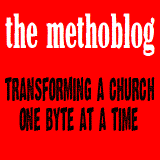How to Worship Like a Methodist
In mid-July, we held our first week of training for the newly-named “probationary pastors.” The Board of Ordained Ministry had asked that we provide training for very specific “Methodist” topics, like Wesleyan history and theology.
I was also asked to do a session on Methodist worship. This is a subject that is presently on everyone’s minds. The pastors have been waiting for me to tell them how to “worship like United Methodists.” That attitude takes me aback a little, I suppose. After all, I have always held a rather loose, non-legalistic attitude towards worship, probably due to my own charismatic upbringing. Meaning that I have always valued freedom in worship, a loose structure.
But the pastors don’t want a “loose structure.” They want specifics, rules, guidelines. And they are willing to do whatever it takes to have Methodist worship. If I teach them that Methodists worship by singing polkas and praying while standing on one foot, they would do it!
Instead, I taught them the basic four-fold structure of Christian worship through the ages (OK, for the uninitiated, those four steps are: Entrance, Proclamation of the Word and Response, Thanksgiving and Communion, and the Sending Forth.). This is something they had never heard before. Many had come from traditions which taught that worship was nothing but music and preaching. The idea that worship has a theological flow and rhythm was novel to most of them.
Even as I was teaching this, however, I was quick to tell them that they had much freedom within this structure.
Pshaw! They didn’t want to hear that. They wanted me to hand them an order of service to use every week!
I struggled a bit with this idea. After all, I have been trying so hard NOT to be a colonial-style missionary, trying NOT to enforce top-down church mandates. But there were ten pastors begging me to tell them how to do things in their services!
One of the things they desperately wanted was uniformity among the churches. As Pastor David put it, “When you walk into one of our churches in Cameroon, you ought to be able to tell that this is a Methodist church.” I certainly understand that sentiment. ‘Cause it certainly isn’t true of UMCs in America!
There is also a strong desire to be different from the other Christian churches in Cameroon – neither Pentecostal, which has no order, nor Catholic/Presbyterian, which is too formal and rigid.
But, in the end, I refused to tell them how they must worship. Instead, I asked them to decide for themselves what Cameroonian Methodist worship looked like.
So we sat in the room and hammered out a standard order of worship for Sunday morning services. The pastors chose the items, one by one, in careful dialogue and with some debate. Here is what they came up with:
ENTRANCE
Procession
Word of Welcome
Call to Worship
Opening Prayer
Hymn
Confession of Sins and Pardon (except in services with Holy Communion)
Act of Praise
Apostle’s Creed
Passing of Peace
Praises together
PROCLAMATION
Prayer for Illumination
Scripture reading (all 3 lectionary readings must be used each Sunday; the people should stand for 3rd reading)
Sermon
Response to sermon (suggestions: silence, altar call, song)
Intercessory Prayer
Offerings/ Doxology
THANKSGIVING or HOLY COMMUNION
Act of Thanksgiving (in services without Holy Communion)
SENDING FORTH
Announcements
Closing hymn
Lord’s Prayer (except in services with Holy Communion)
Exhortation of Sending Forth
Benediction
In the end, there is lots of freedom in this order. Pastors are free to add anything they like to this order; they are simply asked to make sure that each service includes these elements, in this order. And pastors are free within the structure – we didn’t mandate how to pray, whether written prayers must be used, or the style of music.
When we were finished, the pastors were thrilled. They couldn’t wait to get back to their churches to unveil the new worship pattern.
It will be very interesting to see how this pattern develops, evolves, and changes. I’ll let you know …


